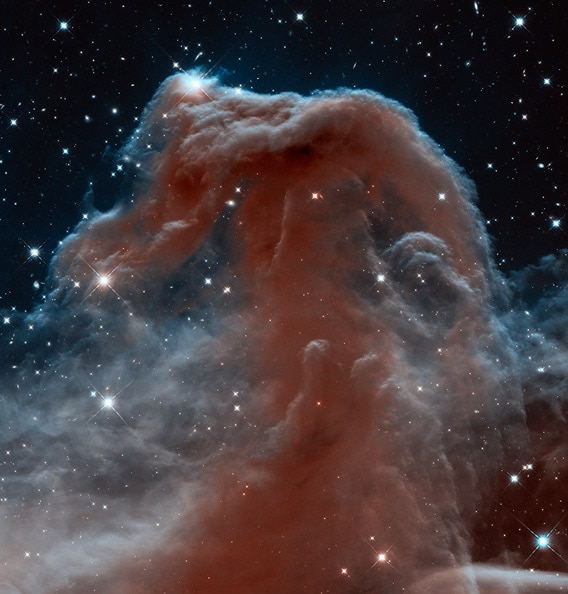Create a free profile to get unlimited access to exclusive videos, sweepstakes, and more!
Hubble's Knight to Remember

On April 24, 1990, the Hubble Space Telescope was launched into orbit, on its way to revolutionizing astronomy. This week marks the 23rd anniversary of that event, and to celebrate, astronomers released a devastating image of the iconic Horsehead nebula, a vast and dense cloud of gas and dust in Orion:
Holy wow. Not only is that beautiful, itâs weird. Iâm not used to seeing it this way.
The Horsehead is superposed on a ridge of bright hydrogen gas, usually seen as a reddish-pink glowing sheet. Because the Horsehead is choked with dust, itâs opaque, and blocks the light from behind it. We see it in silhouette, dark against a bright background.
But the Hubble image is in the infrared. That light, just outside of what our eyes can see, is better able to pierce through the dust. In the Hubble image weâre seeing more deeply into the Horsehead, seeing detail inside the cloud.
So exactly what are we seeing? Just off the top of the Hubble picture is the bright star system Sigma Orionis, composed of five incredibly luminous stars. Combined, they shine with the power of over 75,000 Suns! They are responsible for heating and exciting the gas behind the Horsehead.
The Horsehead itself is the site of ongoing star formation. The dense gas and dust inside the nebula is collapsing to form stars, and, at the same time, the edges are being eroded away by the fierce ultraviolet light of Sigma Orionis. The top of the Horsehead is acting a bit like a shield, protecting the material beneath it, which is why itâs taken on that umbrella-like shape. You can see more sculpted pillars of material around the sides, too, like sandbars in a stream. Thatâs pretty typical in situations like this.
So the Horsehead is getting blasted from above by Sigma Orionis, which is slowly dissolving away the nebula. Eventually it will disappear, but that will take a few million years. And left behind in its passing will be a set of new, young stars, shining brightly, their light free to cross the cosmos.
Itâs all part of the natural cycle of the Universe: Structures come and go, sprawling clouds of gas and dust spawn stars from their own material that will take their place and eventually destroy themâ¦but many of those stars will eventually explode and seed space with the elements and conditions that will help create the next generation of stars. We literally owe our existence to some long-gone nebula like the Horsehead, and to the stars that existed even before it.
So appreciate the beauty of the Horsehead while itâs here, and itâs necessity when itâs gone.


























